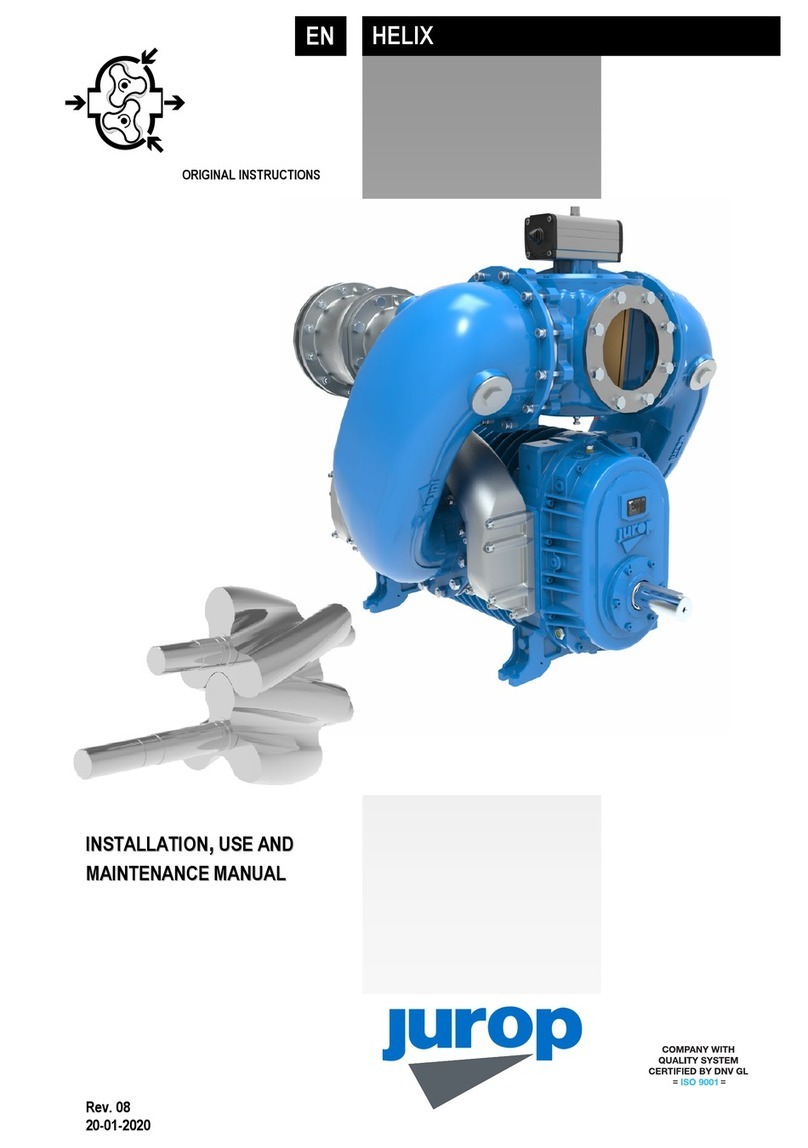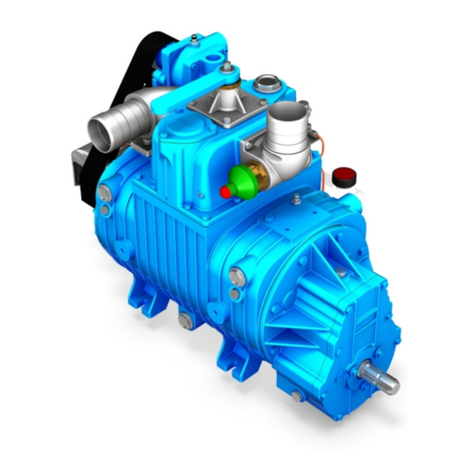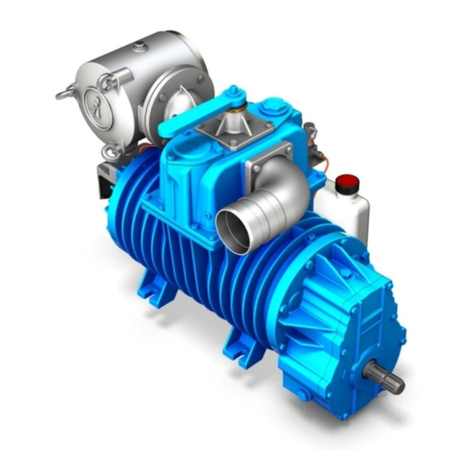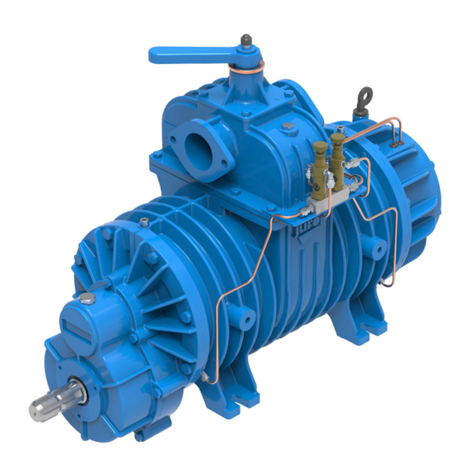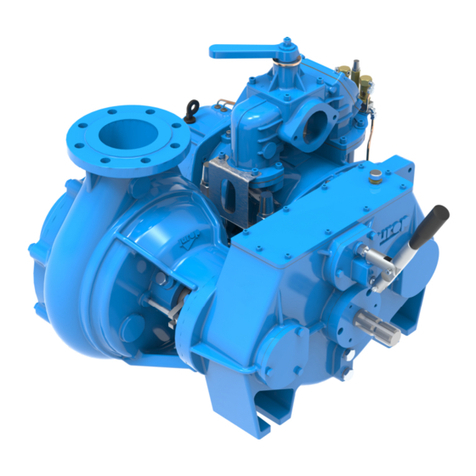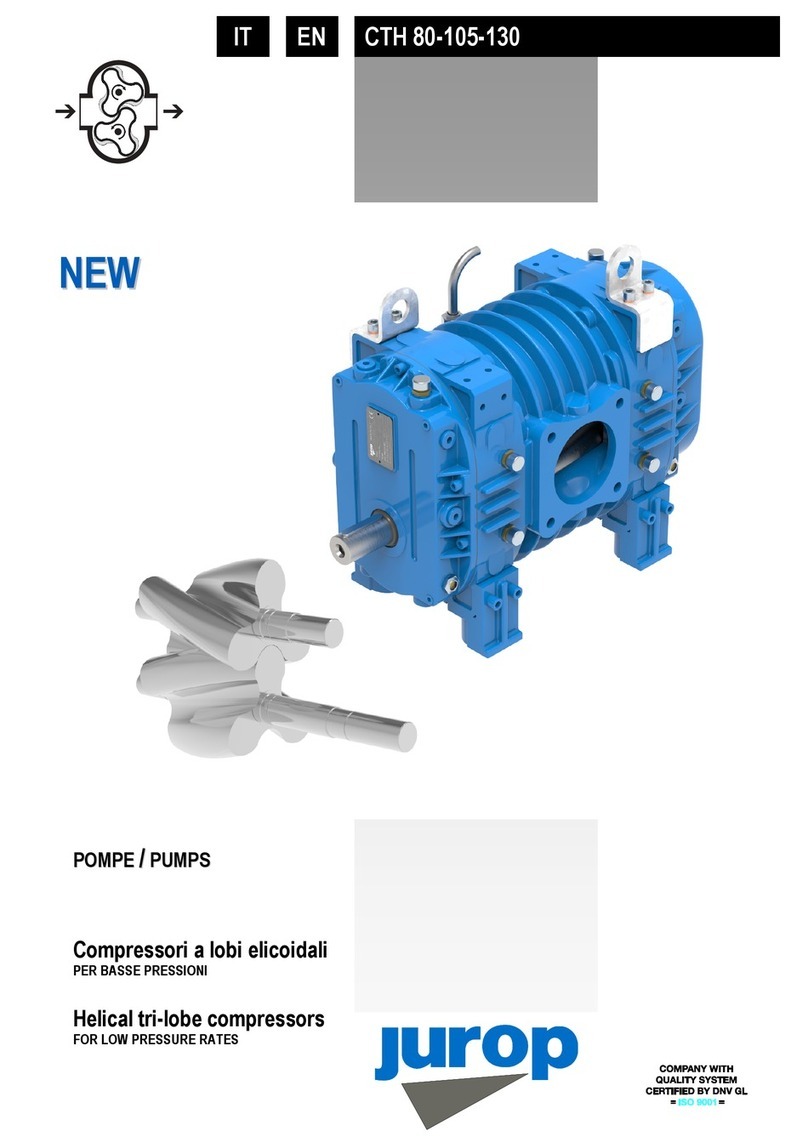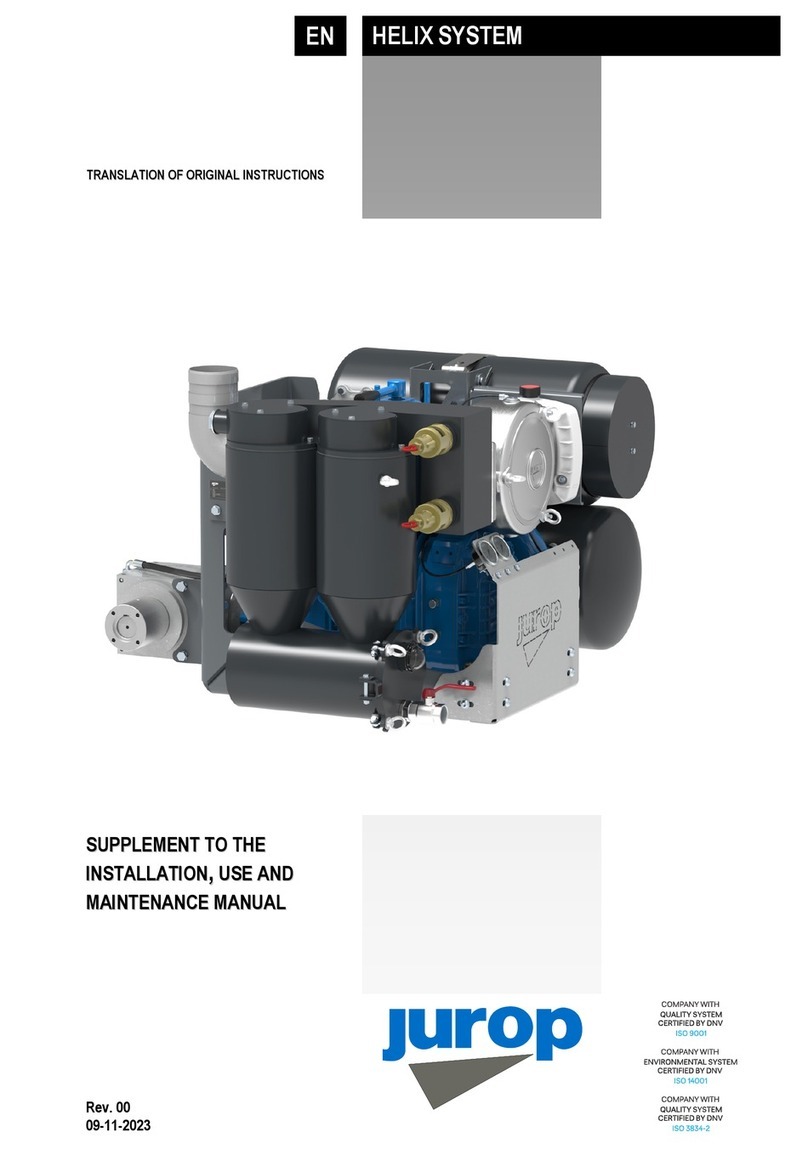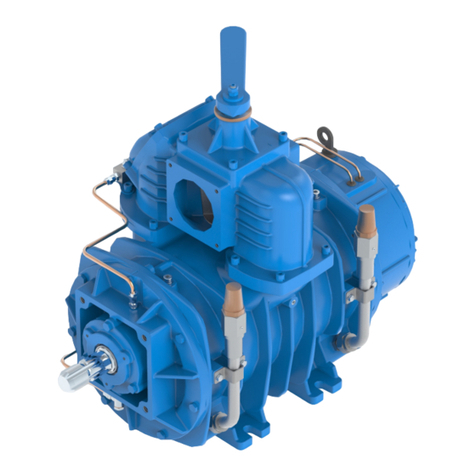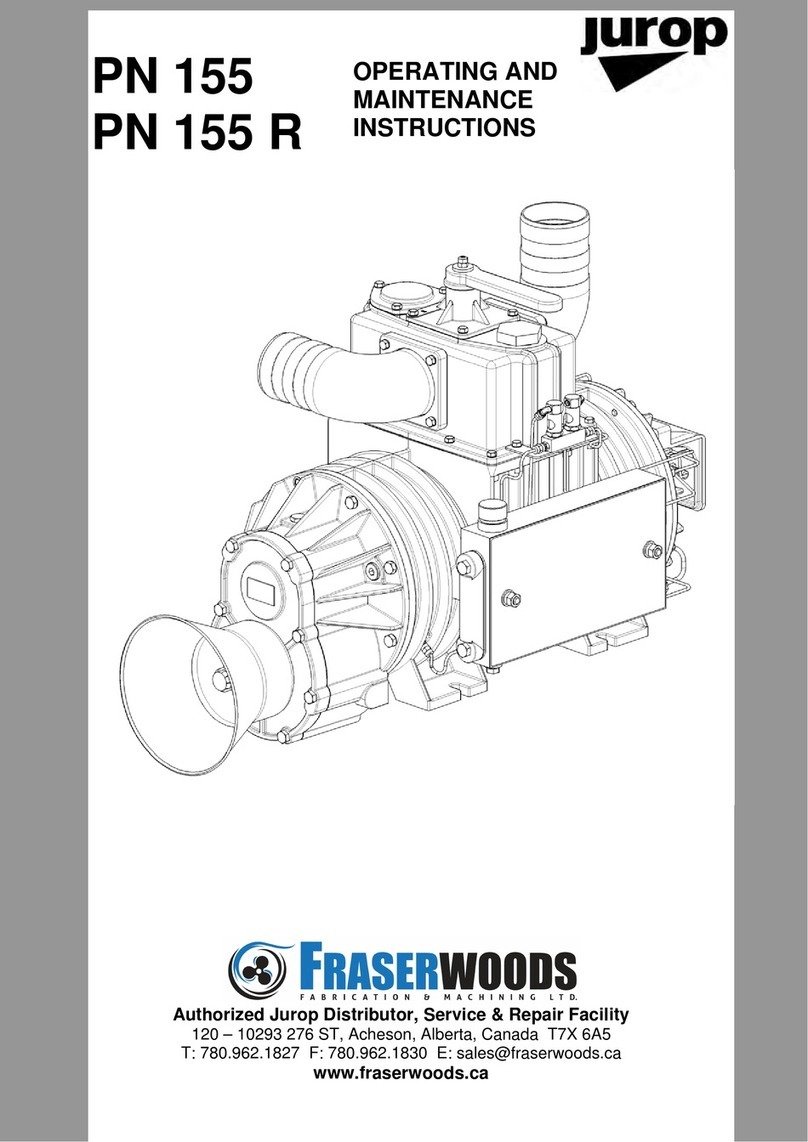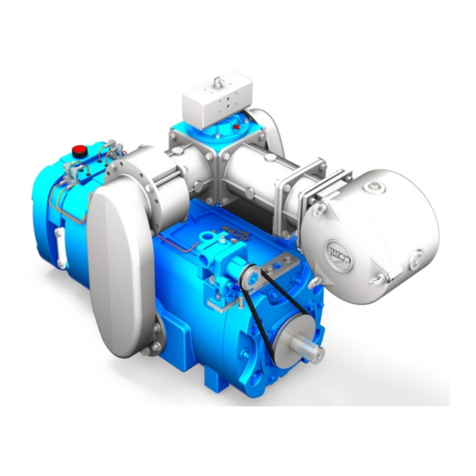http://www.jur p.it
e-mail: inf @jur p.it
• Rem ve the p rt guards when m unting. The pipes and
c mp nents f the wh le line must be clean.
• Av id c nstricti ns and tight curves where they are n t essential.
• C nnect the pump t the tank thr ugh the sucti n manif ld (Fig.
4.1 - p s. 8) which has a threaded p rt f r fitting the ver-pressure
valve.
• The exhaust pipes can reach high temperatures. Pr tect th se
adequately fr m the perat r reach.
• A clapet valve n sucti n pipe av ids r tati n in the pp site
directi n when the pump st ps.
• T av id that f reign liquids will enter the vacuum pump it is
necessary t m unt n the sucti n line an ver-fl w valve f “fl ating-
ball” type (Fig. 4.2. - p s. 1). The fl w secti n f this valve must be
equivalent t the sucti n h se’s ne.
• It is als necessary t have n the line a suitable air filter f r
preventing s lids t be sucked inside the vacuum pump. It is als
rec mmended t m unt a “sec ndary shut ff” f fl ating-ball type (Fig.
4.2 - p s. 2) between vacuum pump and ver-fl w (primary shut ff),
al ng with the previ usly menti ned air filter (Fig. 4.2 - p s. 3).
• Called als 4-way valve, n rmally is manually perated but it can
be at any time transf rmed in pneumatically r hydraulic perated up n
request f the appr priate kit.
• During n rmal running f the pump the resulting n ise sh uld be
reduced by means f a suitable silencer (Fig. 4.2 - p s. 4) m unted as
cl se as p ssible t the pump itself. It has t be dimensi ned f r the air
fl w pr duced by the pump m del. The il used f r the pump’s inside
lubricati n has t be separated fr m the exhausted air by means f an
adequate il-separat r, placed directly inside the silencer. The silencer
is fitted als with a draining tap f r the c llected il and c ndensed
liquids
• Over-pressure safety relief valve. It must be dimensi ned t
discharge the entire air-fl w f the pump. The adjustement f this valve
has t be kept inside 10% f t llerance f the pump's w rking pressure
and in any case it has t stay inside the given value f the tank's w rk
pressure.
• F r pumps that reach, during n rmal perating, discharge air
temperature cl se t 150 °C (300°F) - (checked at n t m re than 150
mm fr m the discharge c nnecti n) it is necessary t use a device
( verheating limiter) that will n t all w t exceed such temperature.
C ntact ur Technical Department.
• An adjustable curved pipe is installed n the utlet f the silencer,
in rder t prevent rain fr m entering and t enable p siti ning (during
installati n) f the utput airfl w.
• Direct the silencer discharge utput away fr m the silencer sucti n
inlet in rder t prevent the input f h t fluids int the injecti n inlet.
Atte tio : direct the sile cer discharge output
away from the sile cer suctio i let.
4.5 Hydraulic actuator adjustme t
• Extra rdinary maintenance perati ns can require the upper c ver
(and that f the actuat r, either manual r pneumatic) t be rem ved.
We rec mmend ensuring en ugh space t carry ut such perati ns.
• If the c ck bl cks r it m ves with fricti n, screw up the clearance
regulati n nut (A). Screw up ¼ f turn each time. Bl ck the nut r tati n
with the safety nut.
• The lubricati n p ints (B) and the clearance regulati n b lt (A)
must be accessible. See Fig. 4.5.
• Lubricate with grease every 1000 cycles. Grease type NLGI 2.
• It is suggested t install 2 ne‐way fl w c ntr ller between the
hydraulic switch and the hydraulic actuat r. Set the fl w c ntr llers in
rder t prevent hard hitting thr ugh the end f str ke. Minimum
c mmutati n time: 1 sec nd.
• Maximum feed pressure: 30 bar.
• T rder spare parts see spare parts list at the end f this manual.
Pic. 4.3
4.6 P eumatic actuator adjustme t
• In the event f 4-way valves equipped with pneumatic actuat r, we
rec mmend installing tw ne-way fl w regulat rs between the
pneumatic “c ntr l” and the pneumatic actuat r. The f ll wing figure
sh ws a schematic view f a p ssible pneumatic installati n.
Pic. 4.4
• We rec mmend adjusting the tw fl w regulat rs in rder f r
r tati n t ccur with ut kn cks and with a switching time f at least
ne sec nd.
4.7. Pump mou ti g - drive co ectio
A) Carda shaft drive
• Use telesc pic cardan shafts.

